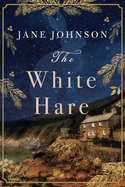
Jane Johnson (The Sea Gate; The Tenth Gift) transports readers to rural Cornwall in the years just after World War II in The White Hare, a fanciful novel of family, village life, history, mythology and more.
In the opening pages, first-person narrator Mila, her daughter, Janey, and her mother, Magda, arrive at their new home, a grand but dilapidated Cornish seaside estate, in the summer of 1954. Timid Mila is fleeing an unnamed scandal in London; the irascible Magda has taken charge of their little troop. Janey, age five, is eager to explore her new surroundings, accompanied by Rabbit, her stuffed toy and best friend. The estate, purchased with unexplained but apparently significant funds, has a mysterious history; locals make foreboding remarks and then clam up. "Best not talk about unlucky things too much, or you may attract unwanted attention," Mila is warned. Magda plans to refurbish and open a grand guest house, with Mila to cook and clean. Immediately and surprisingly latching on to their odd household is Jack Lord, a local who is (like all these characters) unforthcoming about his past, but handy with repairs and good with high-spirited, imaginative, clever Janey. Things go bump in the night, there are hints of ghosts and old crimes, and the vicar in town is inexplicably, aggressively sinister.
The White Hare is jam-packed with slowly released secrets: those between mothers and daughters, those kept by the villagers, and those locked away within traumatized minds. With lush descriptions of fashion, food and especially nature, Johnson's prose appeals to sentiment and expertly evokes an often-menacing mood. --Julia Kastner, librarian and blogger at pagesofjulia

